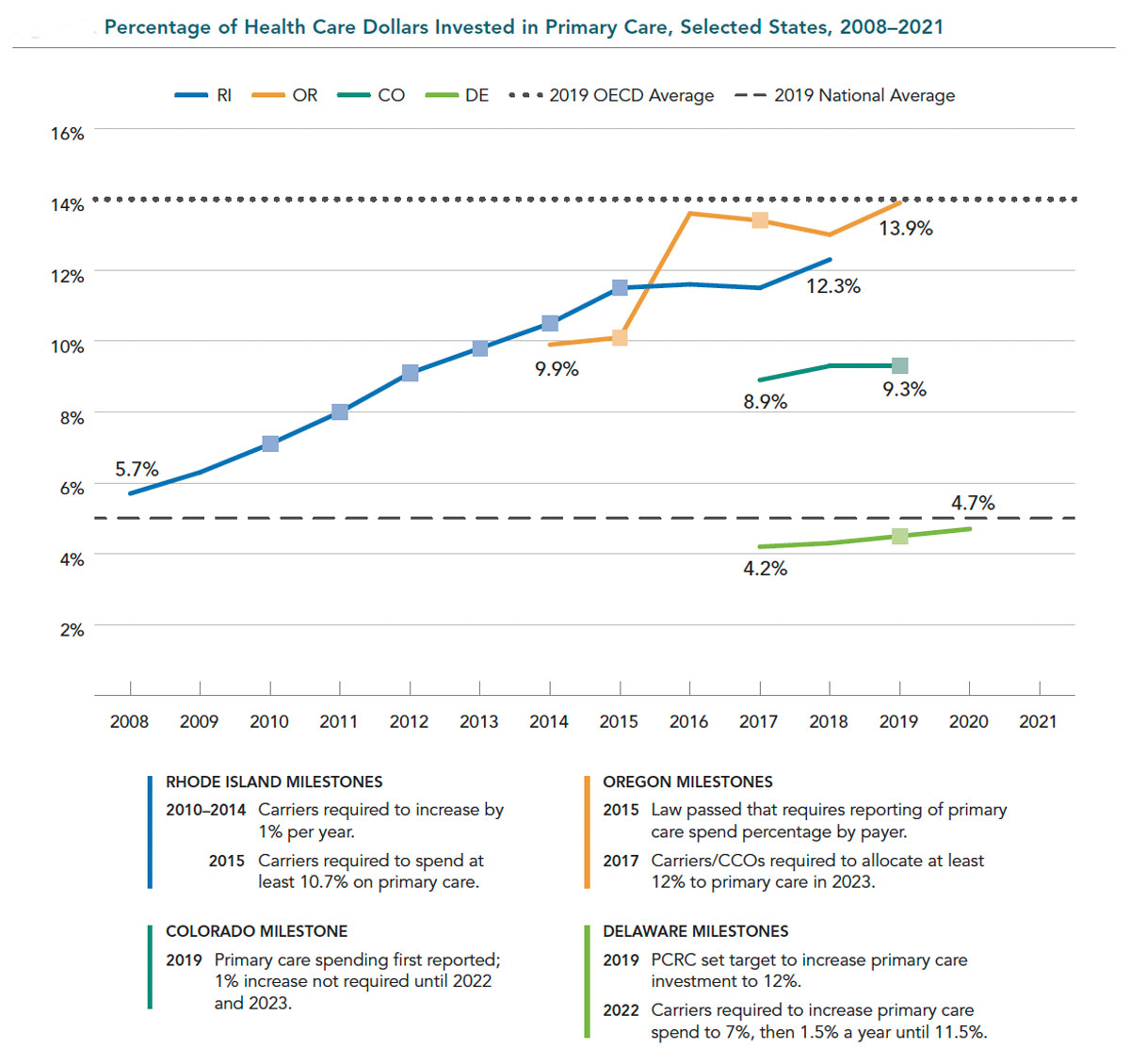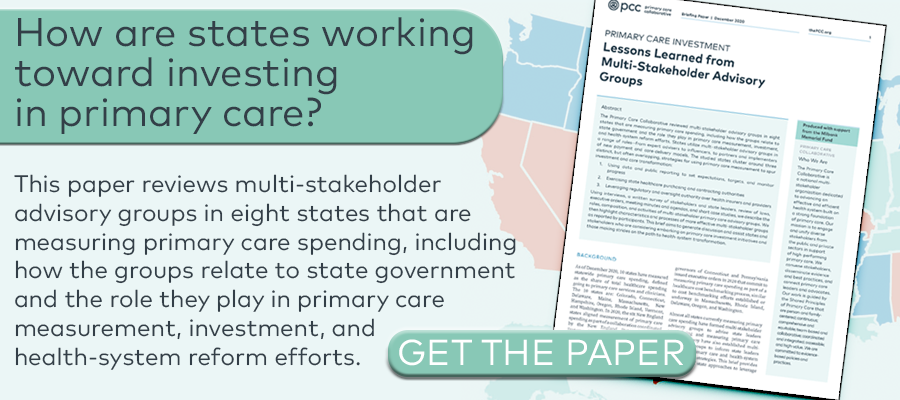You are looking at an archived version of our site. Please visit thepcc.org for a fresh, new experience!
State Primary Care Investment Hub
State Primary Care Investment Initiatives
A filterable web tool for tracking state-level primary care investment legislation.
Primary Care Investment Map
An interactive map view of state-based investment initiatives grouped by state.
Primary Care Investment Resources and Links
A growing list of resources and links relating to Primary Care investment, including sample legislative language addressing key design issues
Primary Care: Essential to Health
There is nothing more important than our health. Decades of research have shown that increased investments in primary care lead to higher-quality and more equitable care as well as lower costs. Higher investment in primary care is associated with lower costs, higher patient satisfaction, fewer hospitalizations and emergency department visits, and lower mortality.
For patients, health care stakeholders, policymakers and large employers,shifting resources to person-centered, community-oriented primary care is a policy imperative
The Challenge
Despite high levels of overall healthcare spending in the United States, the proportion spent on primary care is relatively small and declining.The US, on average, spends only about five cents of every health care dollar on primary care - contributing to performance that lags other industrialized countries..
This underinvestment in primary care creates gaps in patient access and workforce, driving disparities between communities. Primary care underinvestment undermines our ability to confront our biggest health challenges, including chronic diseases like heart disease and type 2 diabetes, poor mental health and infectious disease epidemics.
A Proven, State-Led Solution
In more than one-third of states, stakeholders and policymakers have come together to reorient their health system toward primary care - through laws or regulations that track and improve investment in primary care over time. As illustrated below, four of the states that launched this growing trend are making a big difference.
Source: https://www.chcf.org/wp-content/uploads/2022/03/InvestingPCLessonsStateBasedEfforts.pdf
KEY RESOURCES
State Reports on Primary Care Spending:
- Virginia State Primary Care Spend Report (2024)
- Connecticut State Report (2023)
- Delaware State Report (2023)
- Utah State Report (2021)
- New England Regional Report (2020)
- Maine State Report (2020)
- Oregon State Report (2020)
- Vermont State Report (2020)
- Colorado State Report (2019-2021)
- Washington State Report (2019)
- Oregon State Report (2020)
- Rhode Island State Report (2014)
PCC Reports and Resources:
 Primary Care Spending: High Stakes, Low Investment
Primary Care Spending: High Stakes, Low Investment
In its annual evidence-based report for 2020, the PCC took its broadest look to date at primary care spending over time, in all 50 states and nationally. The report reveals some alarming trends.
 Investing in Primary Care: A State-Level Analysis
Investing in Primary Care: A State-Level Analysis
PCC's annual evidence-based report for 2019, which examined states’ primary care spending patterns, including spending across payer types, and considered the implications of these results for select patient outcomes.
PCC's State Primary Care Investment Workgroup
On a quarterly basis, PCC convenes Executive Member organizations and state leaders from across the country to discuss current trends in state legislation and regulations related to primary care investment. The workgroup's video calls offer participants the opportunity to share best practices on how to successfully measure primary care spend and strategies to secure increased investment without growing overall health care expenditures. The workgroup shares updates across states, serves as a forum for peer exchange, and provides visibility to the increasing momentum of state-level actions to measure and improve investment in primary care.
Co-chairs:
- Lisa Watkins, Milbank Memorial Fund
- Larry McNeely, Primary Care Collaborative
Interested in participating in the PCC State Primary Care Investment Workgroup? Contact Larry McNeely, Director of Policy, at lmcneely@thepcc.org.
Secondary menu
Copyright © 2024 Primary Care Collaborative








